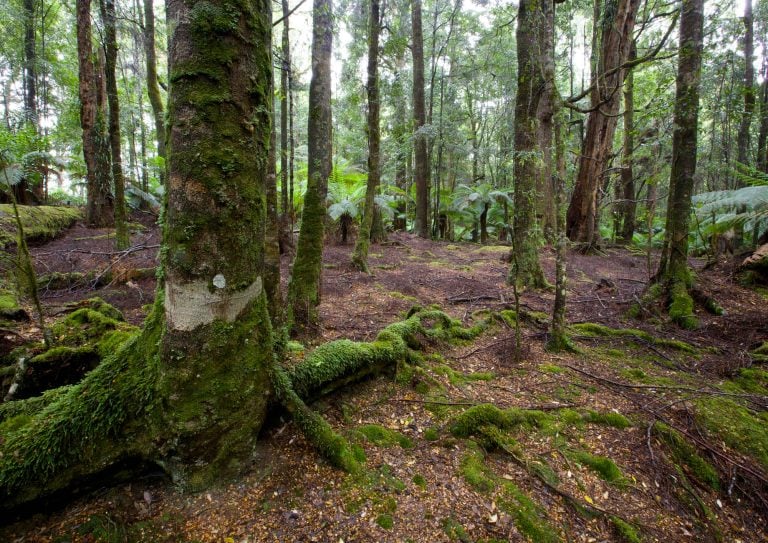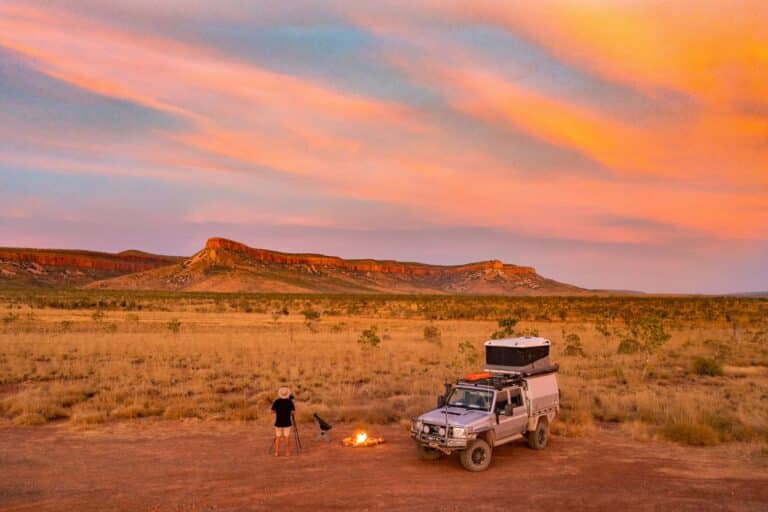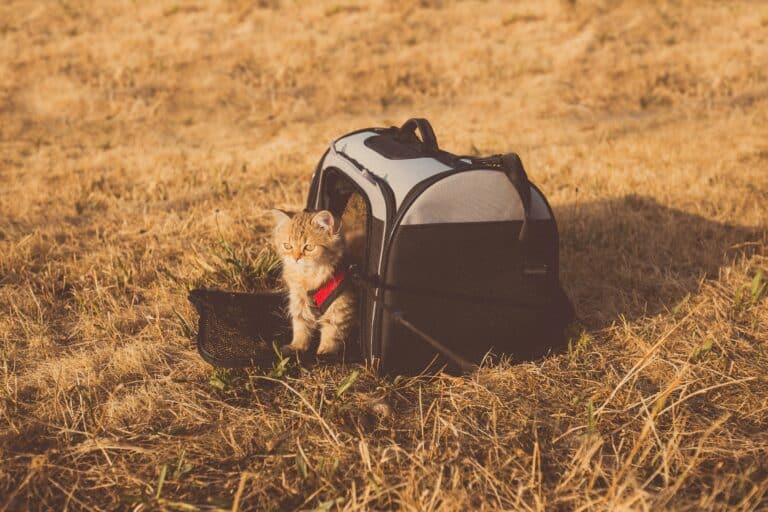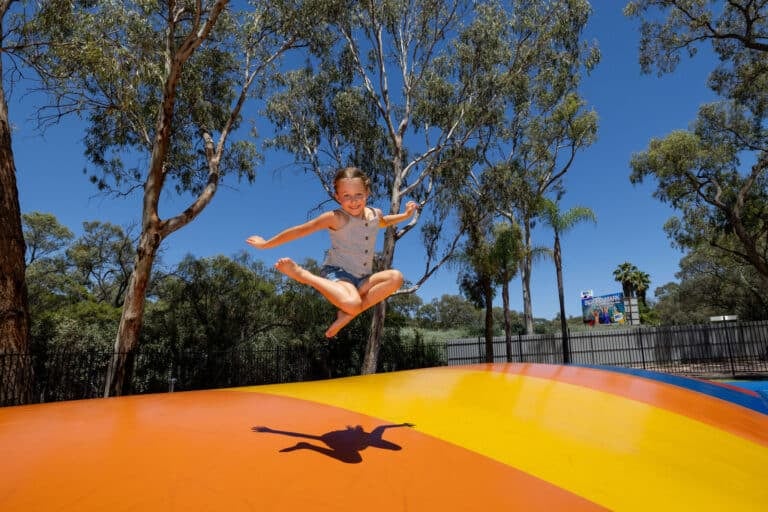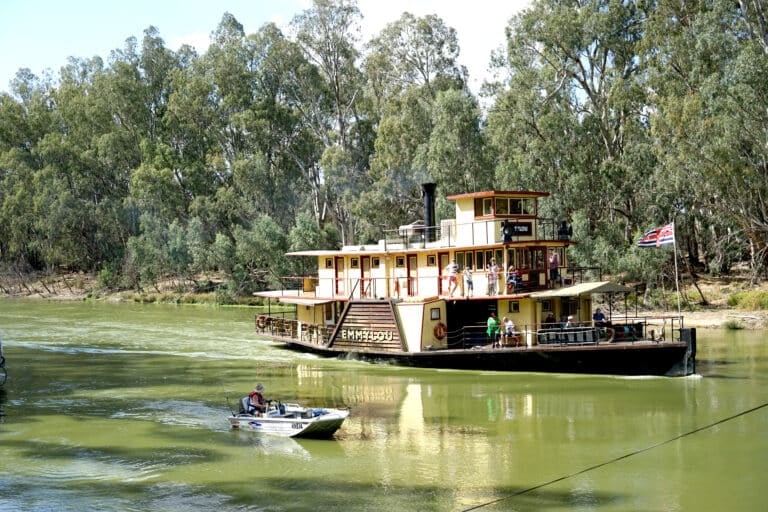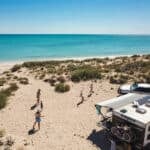By Jan Hawkins
There are few places on Earth where you can still step through the landscape of the Gondwana wilderness – and Tasmania is just such a place. Here on our very own Apple Isle you will find this prehistoric beauty, a place born in a time before time. Much of this island is the remnant of the Gondwana landscape and it can be found all down the sunset side of Tasmania.
We are presently travelling towards the Franklin-Gordon Wild Rivers National Park, venturing through the Tarkine, and its coastal cousin the Arthur Pieman Conservation Area, in the remote north west region. The latter is also the last known habitat of the Tasmanian tiger and here you can find the very Edge of the World at Arthur River.
You will need a recreational driver’s pass on the Arthur Pieman Conservation Reserve if you plan on leaving the main track. You can get this from the Arthur River Field Office. It comes with RV track maps for the area, and at this field office they are happy to give you advice that is well worth taking onboard. If you plan on travelling off-road it is strongly recommended to always travel in convoy, as a State Emergency Service volunteer has commented: “We’ve been pulling people and their vehicles out of the Arthur Pieman for 30 years. She’s beautiful country alright, but by heck she’s unforgiving – that quicksand’s deadly. People really need to know what they are doing and have the right gear.”
Finding the Tasmanian Wilderness
The National Parks and Conservation regions of Tasmania are World Heritage treasures. Much of this region is true wilderness, untouched even by the early loggers and pristine with wild rivers and great grandfather trees in rare ‘old growth’ forests. These wild places can be found along scarce forest 4X4 tracks and the more accessible trails (many tarred and others gravelled) suited to driving and walking.
Most travellers, when the Spirit of Tasmania disgorges its load of RVs, head down the centre of the island towards Hobart or off to the eastern shores towards the beauty of those places to be found running down the more populous eastern coastline. Some, along with many Taswiegans, will go west into the true Tasmanian wilderness. The north west corner above Strahan is one of Tasmania’s secrets and a favourite escape for the locals.
The Tarkine and the Arthur Pieman Conservation Reserve are two sides to an ancient landscape. Where the Tarkine is primitive, often dense with rare temperate rainforest, the Arthur Pieman Conservation Reserve is the stark product of ancient volcanoes ground down by the weight of glaciers. The peat soils and the impervious clay-based soils make 4X4 touring a true, slippery challenge in wet conditions… and it rains a lot on the west coast.
Fishermen seeking crayfish, abalone and other prize catches, troll the wild western shores often in the eye of the winds of the infamous Roaring Forties with some truly remarkable rewards which can be had to offset the risks. Along the shoreline of the Arthur Pieman you can find a number of small sheltered fishing communities at the end of the windy white tracks leading off the main route. Barely clusters of hardy shacks, these fishing villages commonly feature shore-slips for their boats to lift the craft beyond the reach of angry coastal waters.
Drivers also test their vehicles on the demanding tracks hidden in this wilderness – such as the likes of the infamous Balfour Track – and many other 4X4s brave the run along the wild ocean shores. There is more than one photo of a vehicle that has come to grief in the region and such graphic images can be found at Arthur River Ranger Station. They depict 4X4s swallowed in the treacherous hidden quicksands, or those flooded in creek crossings and waterholes that were just a bit deeper than first anticipated. This display is all in a bid to warn travellers of the very real hazards that should not be taken lightly.
Creatures of Wild Tasmania
A real natural delight of the region is the Tasmanian devil. Examples of the species range all throughout Tasmania in the quiet wilderness; but they’re now also an endangered species. They are a real curiosity in the hours of dark if you’re fortunate enough to entertain one for a time. If you’re still, you can also find platypus in the riverways and sinkholes such as Lake Chisholm, deep in the Tarkine; and in other national parks waterways all throughout the island.
The Tasmanian platypus is larger than his mainland cousin and spends more time out of the water. Rather than building their burrows with an underwater entrance they often choose a spot concealed by shrubbery higher on the banks – and if you’re diligent you can spot them.
A great guide to get hold of is the 60 Great Short Walks of Tasmania – available freely at most information centres and an initiative of the Tasmanian government. This lists many of the accessible short walks throughout Tasmania – graded and with valuable advice. It is a publication I would highly recommend.
A common trap for the caravanner is to reach the western-shore outpost of Arthur River on their west coast adventure, with a view to travelling down to Zeehan and Strahan along the Norfolk Road/Track through the Arthur Pieman. It is approximately 100 kilometres on a well-surfaced and windy track to Corinna, and here there’s a punt to cross the Pieman River.
The Fatman Barge, as it’s known, also carries conditions. There are limitations to what the punt man can cater for, and a caravan in tow offers real problems. The punt is limited to tow vehicle and van combinations not exceeding nine metres in wheelbase, with an overall ferry capacity of 6.5 tonnes. More than one caravan has had to head back up to the Murchinson Highway. It’s a 152-kilometre detour from Corinna to Zeehan via Savage River and not an easy tow for a caravan. The punt is $25 per car. While it will take at the most two vehicles, it won’t usually manage any caravan over 18 feet… so check your sizing.
People of an Ancient World
The Tasmanian Island is the home of the Palawa or the amalgam of the Tasmanian Aboriginal tribes, and while the old tribes were decimated by disease and harassed, often cruelly, by the English colonists and the government of the day, they still maintain a presence all through Tasmania. There are a number of valued sites throughout the island – middens, shelter caves and precious petroglyphs (rock carvings) such as those at Preminghana Aboriginal Land on the NW Coast – which are valued not only by Australians but by the world.
When venturing into these remote regions of this beautiful isle you should always be aware of the value of our traditional heritage. It is easy to unwittingly destroy a midden, as large as some of these are (having been built over many millennia). These ancient places are our Australian heritage and they’re valued beyond any souvenir or graffiti. Take only pictures, and leave only footsteps in these ancient places; in doing so you gift others the thrill of discovery
